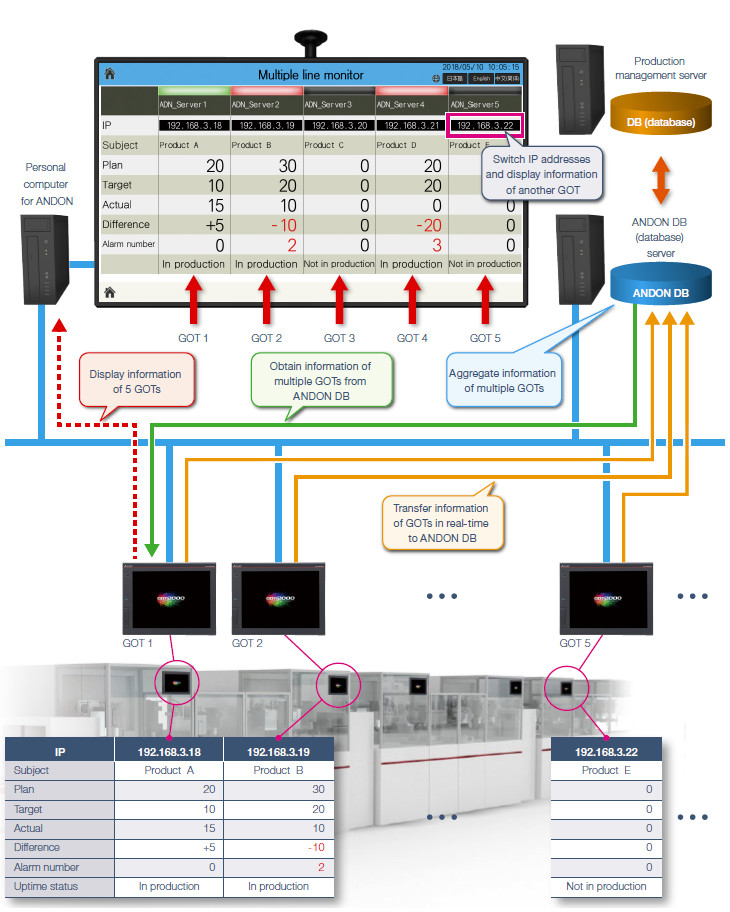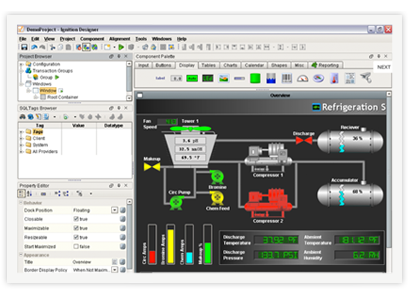
MQTT Transmission, Distributor, and Engine It should be noted that Ignition can also connect to third-party OPC servers for data collection, either through the platform for OPC UA connections, or through the OPC COM Module for OPC DA connections. The OPC UA Module acts as the foundation for Ignition’s drivers, which offer native communication to a large number of devices. Data is stored into SQL database tables, and options are provided for storing quality codes, timestamps, auto creating configured tables, data rates, scheduling, and more. This module provides Transaction Groups, which are used for event-based logging. Depending on the storage engine being used, the Tag Historian Module will either perform the retrieval directly and perform any appropriate aggregates, or in the case of using third-party storage engines, the Tag Historian Module will pass the request through to the storage engine. The Tag Historian Module can be used to retrieve history and perform calculations and aggregations on historical data. Regardless of the storage engine, the Tag Historian Module offers tools for data storage rates, compression, deadbands, and a number of other features.

Additional storage engines are available from third-party developers, some of which can be found on the Module Showcase. SQL-based storage is the normal recommendation for most systems, and pipes data through to an attached SQL database. Internal storage is available to store small amounts of data within Ignition itself.

Storage of data by the Tag Historian Module can go to several locations. Incoming tag changes can be piped to data storage, and tag history can be retrieved through the module. This provides storage and retrieval of historical data through Ignition’s tag system. The modules that are used in a typical system are outlined below. Many companies use more modules, especially if event-based storage is needed or direct device communication will be used. The bare minimum needed to use Ignition as a tag historian is the Tag Historian Module. Ignition’s modular architecture allows for the choice between using a single module or using multiple modules for a given installation. Modulesĭiagram 1: One possible configuration of modules when Ignition is used as a data historian. As such, this document covers the modules for those features.
#Ignition mes file monitor full#
Often, users combine Ignition’s historian functionality with SCADA, HMI, IIoT, or MES functionality.Īlthough many people think of Ignition’s Tag Historian Module as the “Ignition Historian,” a full data historian often is described by not only storing tag data, but also storing event-based data and providing visualization. Several modules are often used together to provide a complete system. Ignition’s data historian functionality is a robust set of features that are built into Ignition modules, providing data acquisition, storage, retrieval, and visualization.Īs with everything else in Ignition, historian functionality is modular. Ignition Exchange Community-made Ignition resources.Ignition Maker Edition Made for hobbyist and educational use.

Ignition Edge Made for field and OEM devices at the edge.


 0 kommentar(er)
0 kommentar(er)
